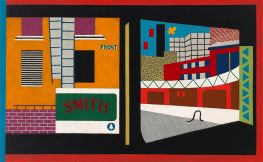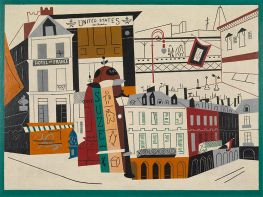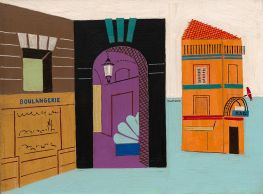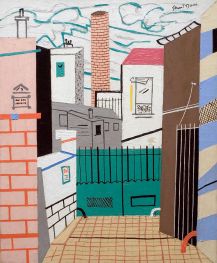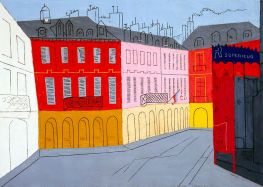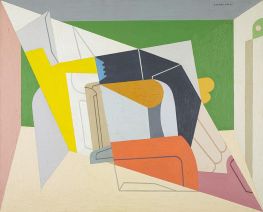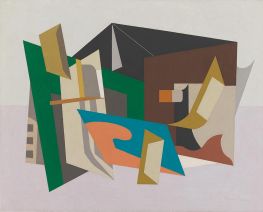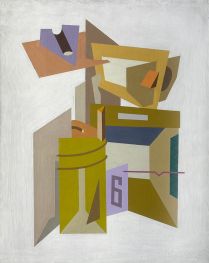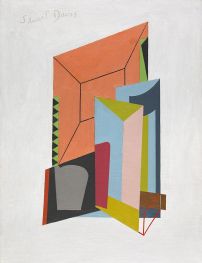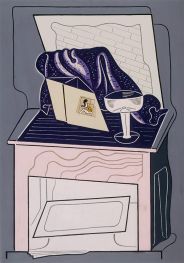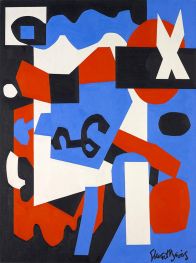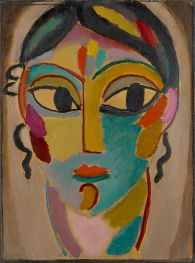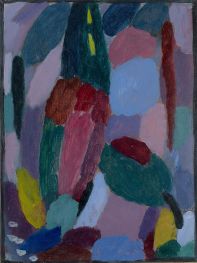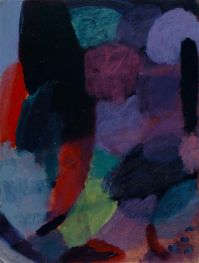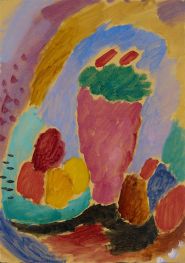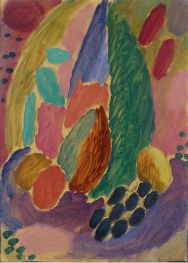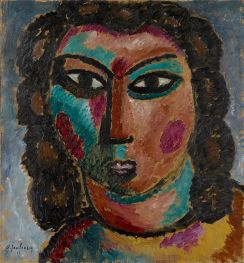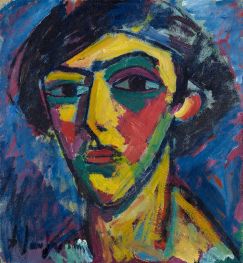Abstract Paintings - Page 2
Abstract painting is a style of art that emerged in the early 20th century as a response to the traditional forms of representation. It is characterized by non-representational forms, colors, and shapes that challenge the viewer's perceptions of reality. The movement was inspired by various sources, including Primitivism, Futurism, Cubism, and Expressionism.
Abstract painting is considered to be one of the most significant art movements of the 20th century and continues to influence contemporary art. It is a form of non-representational art, meaning that it does not depict recognizable objects or scenes from the natural world. Instead, it uses color, shape, texture, and form to create an emotional response in the viewer.
The origins of abstract painting can be traced back to the late 19th and early 20th centuries, when artists began to experiment with new forms of expression that went beyond the traditional representational style. Early pioneers of abstract art include Wassily Kandinsky, Kazimir Malevich, and Piet Mondrian.
One of the key features of abstract painting is the use of color as an expressive element in its own right. Artists such as Mark Rothko and Joan Mitchell used color in a highly emotional and expressive way, creating large, monochromatic canvases that sought to evoke a sense of spiritual transcendence.
Abstract Expressionism is another important offshoot of abstract painting. It emerged in the United States in the 1940s and 1950s and was characterized by gestural brushwork and the use of large canvases. Artists such as Jackson Pollock, Willem de Kooning, and Franz Kline became synonymous with this movement, which was seen as a highly individualistic and expressive form of art.
In conclusion, abstract painting is a diverse and complex art form that continues to evolve and inspire artists. Despite its non-representational nature, it has a rich history and has had a profound impact on the development of modern art.
Abstract painting is considered to be one of the most significant art movements of the 20th century and continues to influence contemporary art. It is a form of non-representational art, meaning that it does not depict recognizable objects or scenes from the natural world. Instead, it uses color, shape, texture, and form to create an emotional response in the viewer.
The origins of abstract painting can be traced back to the late 19th and early 20th centuries, when artists began to experiment with new forms of expression that went beyond the traditional representational style. Early pioneers of abstract art include Wassily Kandinsky, Kazimir Malevich, and Piet Mondrian.
One of the key features of abstract painting is the use of color as an expressive element in its own right. Artists such as Mark Rothko and Joan Mitchell used color in a highly emotional and expressive way, creating large, monochromatic canvases that sought to evoke a sense of spiritual transcendence.
Abstract Expressionism is another important offshoot of abstract painting. It emerged in the United States in the 1940s and 1950s and was characterized by gestural brushwork and the use of large canvases. Artists such as Jackson Pollock, Willem de Kooning, and Franz Kline became synonymous with this movement, which was seen as a highly individualistic and expressive form of art.
In conclusion, abstract painting is a diverse and complex art form that continues to evolve and inspire artists. Despite its non-representational nature, it has a rich history and has had a profound impact on the development of modern art.
page 2 of 16
SKU: STD-19555
Stuart Davis
Original Size: 66 x 108 cm
Whitney Museum of American Art New York USA
Stuart Davis
Original Size: 66 x 108 cm
Whitney Museum of American Art New York USA
SKU: STD-19554
Stuart Davis
Original Size: 76.8 x 102.2 cm
Portland Institute for Contemporary Art Oregon USA
Stuart Davis
Original Size: 76.8 x 102.2 cm
Portland Institute for Contemporary Art Oregon USA
SKU: STD-19553
Stuart Davis
Original Size: 73.7 x 106.7 cm
Private Collection
Stuart Davis
Original Size: 73.7 x 106.7 cm
Private Collection
SKU: STD-19552
Stuart Davis
Original Size: 39.4 x 58 cm
The Newark Museum New Jersey USA
Stuart Davis
Original Size: 39.4 x 58 cm
The Newark Museum New Jersey USA
SKU: STD-19551
Stuart Davis
Original Size: 30.5 x 40.6 cm
Private Collection
Stuart Davis
Original Size: 30.5 x 40.6 cm
Private Collection
SKU: STD-19550
Stuart Davis
Original Size: 72.4 x 59.7 cm
University of Arizona Museum of Art Tucson USA
Stuart Davis
Original Size: 72.4 x 59.7 cm
University of Arizona Museum of Art Tucson USA
SKU: STD-19549
Stuart Davis
Original Size: 92 x 73 cm
Whitney Museum of American Art New York USA
Stuart Davis
Original Size: 92 x 73 cm
Whitney Museum of American Art New York USA
SKU: STD-19548
Stuart Davis
Original Size: 65.3 x 92.3 cm
Herbert F Johnson Museum of Art Ithaca USA
Stuart Davis
Original Size: 65.3 x 92.3 cm
Herbert F Johnson Museum of Art Ithaca USA
SKU: STD-19547
Stuart Davis
Original Size: 74.3 x 92 cm
Amon Carter Museum Texas USA
Stuart Davis
Original Size: 74.3 x 92 cm
Amon Carter Museum Texas USA
SKU: STD-19546
Stuart Davis
Original Size: 74 x 91.4 cm
Whitney Museum of American Art New York USA
Stuart Davis
Original Size: 74 x 91.4 cm
Whitney Museum of American Art New York USA
SKU: STD-19545
Stuart Davis
Original Size: 91.4 x 73.7 cm
Metropolitan Museum of Art New York USA
Stuart Davis
Original Size: 91.4 x 73.7 cm
Metropolitan Museum of Art New York USA
SKU: STD-19544
Stuart Davis
Original Size: 66 x 50.8 cm
Chrysler Museum of Art Norfolk USA
Stuart Davis
Original Size: 66 x 50.8 cm
Chrysler Museum of Art Norfolk USA
SKU: STD-19543
Stuart Davis
Original Size: 122.2 x 86.7 cm
Terra Museum of American Art Chicago USA
Stuart Davis
Original Size: 122.2 x 86.7 cm
Terra Museum of American Art Chicago USA
SKU: STD-19542
Stuart Davis
Original Size: 142.6 x 106.7 cm
Art Institute of Chicago Illinois USA
Stuart Davis
Original Size: 142.6 x 106.7 cm
Art Institute of Chicago Illinois USA
SKU: JAA-19381
Alexei von Jawlensky
Original Size: 40 x 30 cm
Kunstmuseum Basel Switzerland
Alexei von Jawlensky
Original Size: 40 x 30 cm
Kunstmuseum Basel Switzerland
SKU: JAA-19380
Alexei von Jawlensky
Original Size: 37.5 x 26 cm
Kunstmuseum Basel Switzerland
Alexei von Jawlensky
Original Size: 37.5 x 26 cm
Kunstmuseum Basel Switzerland
SKU: JAA-19379
Alexei von Jawlensky
Original Size: 36 x 27 cm
Kunstmuseum Basel Switzerland
Alexei von Jawlensky
Original Size: 36 x 27 cm
Kunstmuseum Basel Switzerland
SKU: JAA-19378
Alexei von Jawlensky
Original Size: 35.5 x 27 cm
Kunstmuseum Basel Switzerland
Alexei von Jawlensky
Original Size: 35.5 x 27 cm
Kunstmuseum Basel Switzerland
SKU: JAA-19377
Alexei von Jawlensky
Original Size: 36 x 27 cm
Kunstmuseum Basel Switzerland
Alexei von Jawlensky
Original Size: 36 x 27 cm
Kunstmuseum Basel Switzerland
SKU: JAA-19376
Alexei von Jawlensky
Original Size: 51.5 x 36.5 cm
Kunstmuseum Basel Switzerland
Alexei von Jawlensky
Original Size: 51.5 x 36.5 cm
Kunstmuseum Basel Switzerland
SKU: JAA-19375
Alexei von Jawlensky
Original Size: 52 x 37.5 cm
Kunstmuseum Basel Switzerland
Alexei von Jawlensky
Original Size: 52 x 37.5 cm
Kunstmuseum Basel Switzerland
SKU: JAA-19374
Alexei von Jawlensky
Original Size: 53.5 x 49.5 cm
Kunstmuseum Basel Switzerland
Alexei von Jawlensky
Original Size: 53.5 x 49.5 cm
Kunstmuseum Basel Switzerland
SKU: JAA-19373
Alexei von Jawlensky
Original Size: 53.5 x 49.5 cm
Kunstmuseum Basel Switzerland
Alexei von Jawlensky
Original Size: 53.5 x 49.5 cm
Kunstmuseum Basel Switzerland
SKU: JAA-19372
Alexei von Jawlensky
Original Size: 50 x 54 cm
Kunstmuseum Basel Switzerland
Alexei von Jawlensky
Original Size: 50 x 54 cm
Kunstmuseum Basel Switzerland
